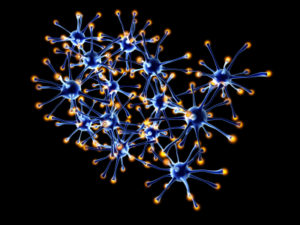 In the age of computers and the Internet one of the most appealing theories of how mind is generated from the neurons of the brain is by the computation of large networks of connecting neurons. Olaf Sporns (Resources) coined the term “connectome;” it refers to the mapping of all neuronal connections. There are many large scientific projects underway in this field to try to find out if mapping the connections will lead to information about normal brain function, consciousness, and mental disorders.
In the age of computers and the Internet one of the most appealing theories of how mind is generated from the neurons of the brain is by the computation of large networks of connecting neurons. Olaf Sporns (Resources) coined the term “connectome;” it refers to the mapping of all neuronal connections. There are many large scientific projects underway in this field to try to find out if mapping the connections will lead to information about normal brain function, consciousness, and mental disorders.
Currently, the National Institute of Health and two other groups are participating in the Human Connectome Project in an attempt to map all neuron connections in the human brain. One group consisting of UCLA and Harvard (MGH) has built the next generation MRI imaging device to visualize tracts of axons. The other consortium of Washington University and University of Minnesota is attempting to map the brain connections of 1200 healthy adults, 300 twin pairs and their families, using non-invasive imaging such as MRI, MEG, and EEG. The Allen Institute for Brain Science has embarked on a project to map the connections of the mouse brain. The mouse brain has a “mere” 70 million brain cells (humans have 100 billion) and the mouse cortex 14 million. The maximum number of connections for one mouse neuron seems to be 45,000. Even this is a monumental project. Below is one technique for extracting complex connection data from MRI.
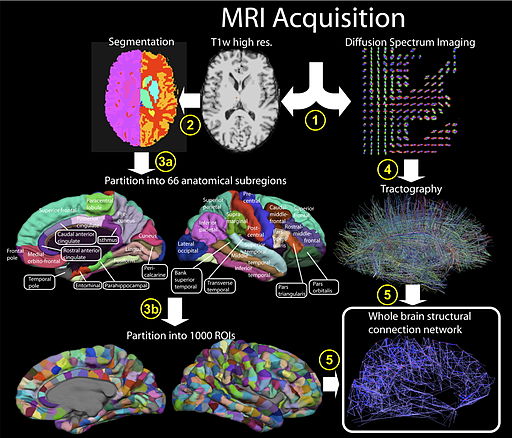
This is actually an extremely difficult quest. It has been a daunting task just to map the 109 DNA base pairs in the human genome, and the number of neuronal connections is a million times greater (1015). Moreover, since connectomes are based on life experiences, each person will have a shifting set of connections. If and when scientists map a human neuronal network, it will only be based on probabilities. Currently, we don’t have computers powerful enough to compute a map of a cubic millimeter of birdbrain, even if we knew what the connections were.
Monumental Complexity
In a human fetus, almost a trillion neurons are produced. During the last month, they are produced at the unbelievable rate of 250,000 per second. Eighty-to-hundred billion of these neurons will be utilized by experience and become permanent, while the other 900 billion will be pruned – that is, carefully dismantled with the material recycled by the brain’s unique immune system.
 Later, during life, a relatively small number of new cells will be added in several parts of the adult brain related to memory and learning. Amazingly, each of the remaining neurons can connect with up to a hundred thousand other cells. This number of connections is a truly enormous number: 10 thousand trillion. Even further complicating this picture is that these connections occur in many different ways, including different placements on neurons, as well as connections with the larger number of other brain cells that aren’t neurons. Many of these connections change every day. While popularly it is thought that there is just one axon, in reality, the one axon ends with a large number of different connections. As well, one neuron can have as many as 100,000 dendrites.
Later, during life, a relatively small number of new cells will be added in several parts of the adult brain related to memory and learning. Amazingly, each of the remaining neurons can connect with up to a hundred thousand other cells. This number of connections is a truly enormous number: 10 thousand trillion. Even further complicating this picture is that these connections occur in many different ways, including different placements on neurons, as well as connections with the larger number of other brain cells that aren’t neurons. Many of these connections change every day. While popularly it is thought that there is just one axon, in reality, the one axon ends with a large number of different connections. As well, one neuron can have as many as 100,000 dendrites.

Yet another complication is that the cortex is divided in approximately 40 regions where there are different shaped neurons (approximately 750 million for each type of neuron) that have different architecture, density, size and connection properties. A recent analysis used genetic (instead of anatomic) data of each neuron type to construct a map and found that these two maps are not identical. For example the occipital and parietal regions have many different genetic types of neurons.
There are many other complications in constructing this map of neurons. A recent study shows that longer connections are more costly in terms of energy use than short term ones. But, they found that many regions made direct connections when there were already indirect shorter ones. When attempting to analyze these tradeoffs, it has also been recently noted that the negotiation between wiring cost and topological value can occur in milliseconds, or over years or decades, all timescales that brain networks evolve and strengthen. Other research shows that circuits grow from small sporadically active circuits and then extend over time to larger and more distant areas.
Even if it is possible one day to map all the connections of the neurons in the brain, the current widely held assumption that neurons operate by the linear summation of inputs reaching a threshold and then firing is incorrect. Recent studies show that neurons use multiple interacting non linear mechanisms to make the final decisions to fire. Complex neurons often have ten different processes going on simultaneously including position-based and time-based reactions, variations in general signal strengths and background noise, distributed excitation and inhibition, and many chemical factors based on the neuron’s multiple channels. The large number of different types of neurons exhibit great differences in complexity in determining the basis for the decisions of the individual neuron to fire. To make matters worse, from the same input two individual neurons can fire differently leaving the final decisions to a democratic vote of different neurons further down the circuit.
Important Theoretical Issues
But, even more limiting at the present time is that none of the current imaging devices describe the actions of individual neurons. To map each neuron scientists have to look at microscopic specimens of brain tissue.
Recent commentary has noted that information about individual neuron computations and populations of neurons must occur long before any connection can be made about behavior. The article in Nature noted: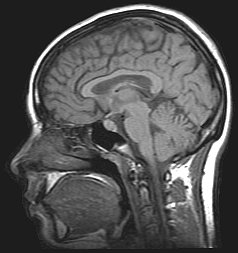
“The general public might think that this goal has already been achieved; when they read that a behavior is associated with some part of the brain, they take that statement as an explanation. But most neuroscientists would agree that, with a few notable exceptions, the relationship between neural circuits and behavior has yet to be established.“
The analogy is given in this article about trying to understand a computer a hundred years ago. They would argue about input, output, connections of wires, different models and brands. But, they couldn’t possibly learn anything about how it worked until they could figure out computer language and computation. This is where we are currently with the brains neuronal network.
Other Types of Communication in the Brain
 A major complication in this entire theory is that many communications in the brain do not seem to be carried by wired connections but, rather, are the result of electromagnetic brain waves that connect different neuron groups. In fact, interesting new research has noted that brain circuits can avoid information traffic jams by using different frequencies of brain waves at the same anatomical point. For more on this area see the post on brain oscillations.
A major complication in this entire theory is that many communications in the brain do not seem to be carried by wired connections but, rather, are the result of electromagnetic brain waves that connect different neuron groups. In fact, interesting new research has noted that brain circuits can avoid information traffic jams by using different frequencies of brain waves at the same anatomical point. For more on this area see the post on brain oscillations.
There are even more recent developments where electrical information has been noted in the local region between cells, and cells have been noted to communicate by photons. The many ways that neurons communicate must all be related at the same time to the workings of the mind.
Despite rosy predictions by some, there is an important question about whether this project (far more complex than the genome project) will bring some of the answers needed to determine how brain connectivity relates to normal function, consciousness, and disease states. A recent editorial in Nature raises the question of whether it’s worth the huge investment that will need to be made.
Positive Connection Results
While these immense problems exist, there are many positive results currently being discovered in this exciting field of research.
There have been important findings about autism and depression. It has been noted, for example, that people with autism have a greater than normal capacity for processing information, that is, more connectivity.
Depression seems to be related to an increased connectivity between two brain regions – thinking cortical regions and emotional limbic regions. These two regions effects seem to converge in one area of hyperactivity, the dorsal medial prefrontal cortex.) ECT treatment seems to help depression by decreasing the hyper connectivity in this same region.
A recent study found that intelligent elderly people had many long-range distant connections. Also, connection research is able to predict face recognition in a region by only examining connectivity.
 Another recent interesting finding concerned sleep. In this study it is noted that during NREM (not dreaming sleep) there is reduced connectivity between eight specific brain regions. This disconnect might influence the integration of information and could have something to do with the loss of consciousness during this segment of sleep.
Another recent interesting finding concerned sleep. In this study it is noted that during NREM (not dreaming sleep) there is reduced connectivity between eight specific brain regions. This disconnect might influence the integration of information and could have something to do with the loss of consciousness during this segment of sleep.
Strengthening Connections Through Experience and Use
A previous post discussed how neuronal connections can be built and broken down each day. One current theory of the network is that memory involves the strengthening of specific connections by added molecular structure in the synapse.
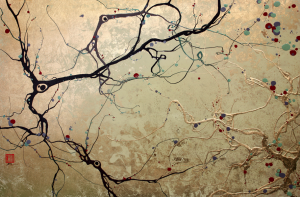 It seems that many neurons make temporary connections (some at random) fueled by genetic machines that glue parts of an axon to a nearby cell with adhesion molecules. Later, if neurotransmitters utilize that synapse the connection stabilizes. Many neurons can fire in sync and create larger networks as well. Only reinforcing the synaptic connection will ensure its permanence as long-term memory. This process of building new connections and tearing unused ones is critical to our learning. Very recently a mechanism of pruning was discovered. It appears that brain immune cells, called microglia, are involved in seeking out unused synapses and pruning them from the network, much as they would otherwise chase and eat invading microbes.
It seems that many neurons make temporary connections (some at random) fueled by genetic machines that glue parts of an axon to a nearby cell with adhesion molecules. Later, if neurotransmitters utilize that synapse the connection stabilizes. Many neurons can fire in sync and create larger networks as well. Only reinforcing the synaptic connection will ensure its permanence as long-term memory. This process of building new connections and tearing unused ones is critical to our learning. Very recently a mechanism of pruning was discovered. It appears that brain immune cells, called microglia, are involved in seeking out unused synapses and pruning them from the network, much as they would otherwise chase and eat invading microbes.
Modules with Short Range and Long Range Connections
Local regions of brain, which control specific processes like vision, are sometimes referred to as modules. Such modules have extreme internal connectivity among their cells. Long range fibers connect these varied modules throughout the brain. As a result, in this model our sense of having one experience, termed unified subjective experience, depends upon long-range connections between many modules.
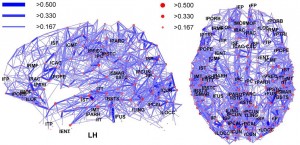
Recently, Sporns found multiple regions of the brain where there is both massive local processing and massive long-range communication at the same time. This implies that all of these local centers are involved in complex cognitive and behavioral tasks involving many regions of the brain — making a case for the unified subjective experience, using the connection model, more difficult.
A Long Way from Finding Out Where or What the Mind Is?
When the genome project was completed it was realized that only a small percentage of our DNA was coded; vast stretches of what are probably regulation regions of the code, called “junk” DNA, remained unknown. It was then discovered that small pieces of RNA, which have their coding in the junk region, have extremely complex roles in regulating and proofreading the DNA. This has become the burgeoning field of RNA silencing.
A similar question remains about the neuron connection project. Will mapping the versions of a human’s neural connections tell us where the mind is? Or, will it introduce even more complexity as the genome project did?
The use of neurons determines many of the connections in the brain, and at least some of this neural use stems from conscious intention. See posts that examine how attention and meditation affect brain connections. A major question for the connectome is where does this mental intention, which determines and prunes the linkages, come from and how does it interact with the neuronal network?
Currently, and for some time to come, the connectome does not tell us where or what the mind is.